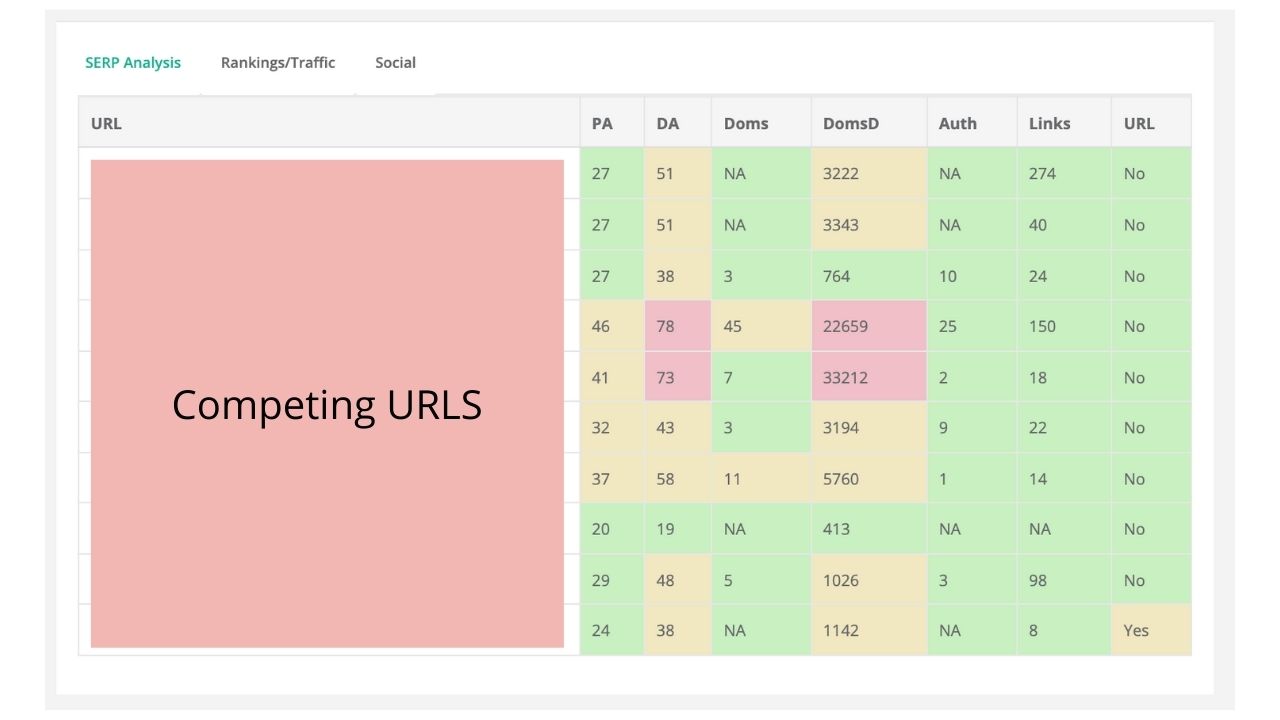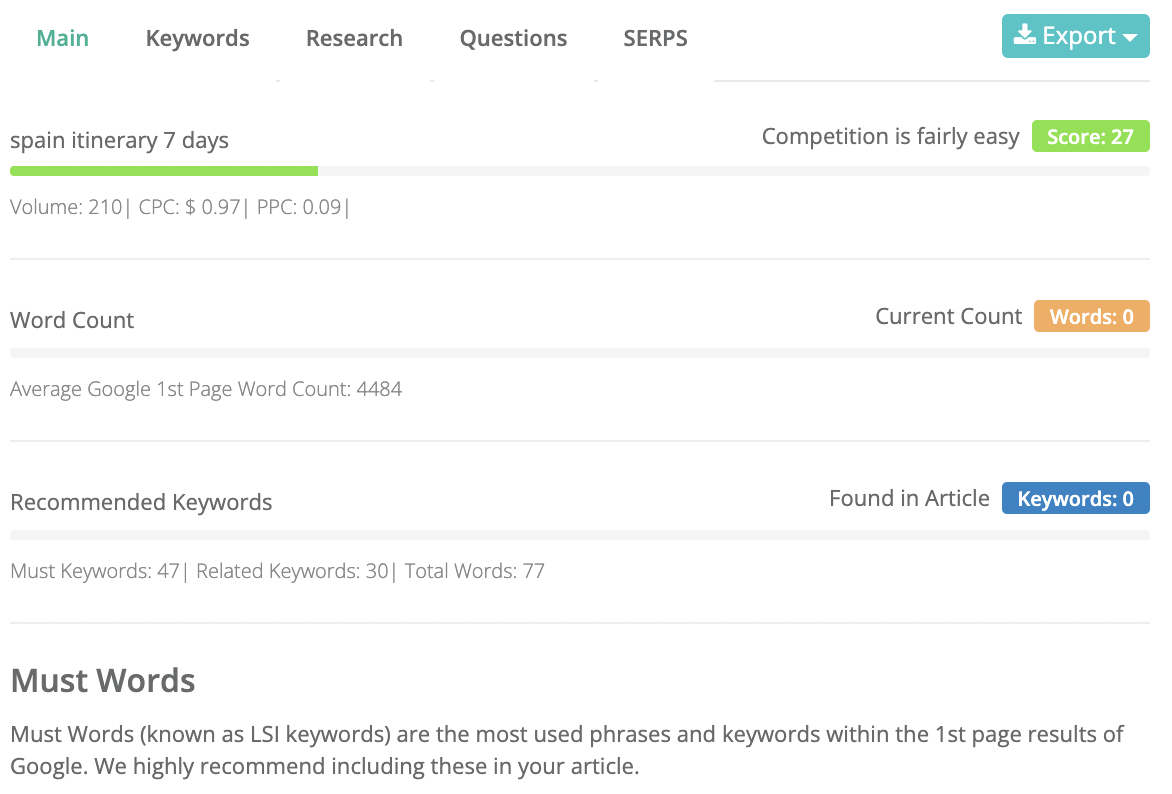SEO for Travel Bloggers: Tips for Ranking First on Google

SEO for Travel Bloggers: Tips for Ranking First on Google
Live Adventure Travel contains affiliate links and is a member of the Amazon Services LLC Associates Program. If you make a purchase using one of these Amazon links, I may receive compensation at no extra cost to you. See my Disclosure Policy for more information.
When I first started my travel blog I had no idea how to develop a readership. And quite frankly, I was under the impression that all I needed to do is write the blog post. Then, somehow, people would magically find it and start reading. And, boy was I wrong. Fast forward two years, I started to understand the power of SEO. This new found knowledge gave me the opportunity to write fully optimised blog posts that ranked on the first page of google. As my SEO efforts began to kick in, I started to jump out of bed every morning to see my stats booming. That is why I want to write this post, a beginners guide to SEO for Travel Bloggers.
What is SEO?
Now, before we begin, let’s have a quick look at SEO. SEO stands for Search Engine Optimisation. It is essentially a formula, or a strategy that allows you to speak googles language. And ultimately, optimise your posts to rank on the first page of Google. Bringing you thousands of readers each week.
SEO for Travel Bloggers: Tips before you type
When I first started to think about my travel blog SEO I thought it would be possible to find all the information I needed free online. And while was possible to an extent, I found that each answer lead to more questions.
I figured all my time spent looking up free guides could be better used if I invested in the tools needed to fast track my knowledge of SEO. There a two major purchases I made that quite literally changed the travel blogging game for me.
The first being SEO the Easy Way by Make Traffic Happen (which is unfortunately no longer being sold but I just want to say a big thank you the Gemma and Laura for years of help). And Keysearch, my favourite affordable SEO research tool.
Now, don’t worry, for those of you not yet ready to make a purchase, I do reference some free tools that you can use throughout the post.
In the first half of this SEO travel blog guide I am going to discuss the top things you should do before you even begin to write.
Get 20% off KEYSEARCH by using the code KSDISC at checkout

1. Define Your Blog Post Topic
Before thinking about SEO you must first choose a topic to write about.
Perhaps you have just returned from a trip across Europe.
You have 101 possible blog post idea’s. And have no idea where to start.
Believe me, I know just how you feel you. I have been in that situation before.
The important thing is to pick one topic and see it through.

2. Find a Keyword Research Tool
Before diving into writing a detailed blog post it is important to determined the correct SEO research tool for you.
Now, while there are some free trail options such as Uber Suggest or Keyword Surfer.
These tools only offer limited searches with their free option, making it difficult to determined the best key word for your blog post.
Now, I hate to be the bearer of bad news, but in order to the right search terms. It is important to invest in a Keyword Research Tool.
I recommend Keysearch as it is an affordable, user friendly and reliable way to rank on Google search.
Get 20% off KEYSEARCH by using the code KSDISC at checkout

3. Determine the Search Term you want to rank for
Finding the perfect search term for your blog post is a lot harder than it sounds.
There are a few aspects you first need to consider:
- Is the term competitive?
- Can you rank for you desired term?
- Does the term have a high search volume?
Let’s take a trip to Spain as an example. It can be tempting to write a post targeting the search term ‘Top Things to do in Spain’.
While this is a highly searched topic, it is also insanely difficult to rank for. Due to the high competition.
It’s important to narrow down your search topic. Think of other search terms that those planning a trip to Spain may look for.
Instead consider writing an Itinerary post or a post for a specific time frame. These terms will be a lot easier to rank for, yet still have a good search volume.

4. Brain Storm Additional Keywords
It is important to note, when writing an optimised blog post you can try to rank for more than one search term.
Yes, you will have to determine the main keyword you wish to rank for. This term will be present in your title, first paragraph and meta data.
However, it is important to also make a note of other keywords you wish to appear in search for.
These should be scattered throughout you blog posts in the paragraphs and H2/H3 headings.
A great way of organising these keywords is by using Keysearch lists features.
This tool allows you to determine the monthly search for each term and the competition score. Allowing you to prioritise the keywords with the least competition yet high search volume.
I like to include 10 – 15 keyword variations throughout my blog post, depending on the word count of each piece.
Get 20% off KEYSEARCH by using the code KSDISC at checkout

5. Define An On Page SEO Strategy
Understanding the importance of On Page SEO can be a difficult task. Especially when you are new to it.
Here are some on page SEO elements you need to consider when writing you blog posts.

6. Download an SEO Plugin
Another essential step for creating a google search optimised blog post is downloading an SEO plugin.
I highly recommend Yoast, this plugin will walk you through step by step how to optimise your blog post for SEO.
The aim of each post is to receive the green light from Yoast. However, I must admit, at times I will not always follow the guidelines recommended by Yoast. As the plugin still favours keyword stuffing. And this is against google guidelines. In other words, if you Keyword is ‘Things to do in Spain’ you should not have that escat phrase appear 11 times throughout the blog post. Instead include different variations of that keyword.
Yoast will highlight elements such as Internal Links, Meta description, Alt attributes, SEO Title, Outbound Links, Text Length ect…

7. Analysis Competing URL’s
Before writing an SEO optimised blog post it is important to first check out the competition.
This is not to copy what others in your niche are doing, but to simply evaluate if you can write a better more in-depth guide.
Your aim is to always write what is best for your readers. If you readers are asking a question it is your goal to answer it.
Now, it is of course possible to check on the competing URLS by simply searching your search term on google. However, this kind search gives you extremely limited data.
In keysearch, I like to search my desired keyword and see who else is ranking for it. From there, we can determine a few things:
- The Competing URL’s Domain Authority
- If they have included the target keyword in the URL
- How many backlinks they have for that particular post.
This data gives us a much clearer indignation if we can outrank this URL in Google Search.

I also like to use Keysearch Content Assistant tool to analysis the average word count of ranking posts for a my desired keyword.
The Content Assistant tool also show us what other keywords are used in a blog post of this topic along with some suggested words to include in our own article.
There is a text box included in this feature which allows you to analysis your post compared to competing URLS. A screenshot of this feature can be seen down below.
Get 20% off KEYSEARCH by using the code KSDISC at checkout

SEO for Travel Blogs: Things you should do after writing your post
Ok, so we have discussed the top things to do to improve search rankings before you even begin to write your blog post. Now it is time to find out how you can improve your SEO travel blog after the post is complete.

8. Google Analytics & Search Console
It is important to ensure you have both Google Analytics and Search Console set up for your site.
Google Analytics gives you an in-depth in-site into your blogs traffic source and demographics.
Search Console is used to resolve issues such as server errors, site speed, hacking and malware.
It is also a great place to determine what keywords a certain blog post is ranking for.
Once I complete a new post or make changes to an old one, I submit the URL to search console to have Google recrawl my site for updates.

9. Be Patient & Track Your progress
It is important to note that it can take anywhere from 1 to 6 months for a blog post to rank on Google.
In fact, I have had posts rank on the first page a whole year after I wrote them.
Although it is tempting, try not to edit a new blog post until at least 6 months after you have wrote it. You need to give google time to analyse the post.
Track your blog post performance. Now, this is much easier to do with a tool like Keysearch as they have a rank track tool that monitors your posts position on google.
However, it is possible to track you post position for free by using incognito mode on google. Manually find you posts position and keep track of it on a google spreadsheet. However, This can be time consuming to do for each post.
Below is a screenshot of the Keysearch Rank Tracking Tool, it highlight the keyword, the position on google and the search volume. It also displays if the keywords position has moved up or down that day.
Get 20% off KEYSEARCH by using the code KSDISC at checkout

10. Develop strong writing skills
It is important to have a strong voice when writing a travel blog.
Having the ability to draw the reader in, to provoke emotion and tell a compelling story is a great way to cheap returning viewers.
If you feel you need to improve in this area, I highly suggest signing up to Skillshares free trail.
I use Skillshare to learn about a range of different topics from SEO, Video Editing, Photography and Writing.

11. Improve your site appearance
Finding a layout that works for both you and your readers is supper important.
You wouldn’t think this is something that has much impact on SEO but it is one of the essential aspects.
If your site is user friendly and layout well, your readers are likely to stick around for longer.
Long time spent on page is a good signal for google. This is turn could lead to your post being pushed further up the search results.

12. Travel Vlogging
Another great way to increase SEO efforts and double time spent on the page is combining the use of video content and written content.
This is something I have been experimenting with recently. I have noticed blog posts with related youtube videos tend to rank higher in search results.
It also increases the readers time spent on page which in turn encourages Google to push the blog post higher on the search page.
PS: If you have an interest in video travel content I would love for you to subscribe to My Youtube Channel.
If you have an interest in growing a youtube audience I highly recommend checking out Lost Creator Academy. The course teaches you everything you need to know to become a full time content creator. You can check out my detailed review here.

13. Building Backlinks
Another vital part of SEO is building backlinks.
This is a way of telling Google your website is a valued source of information and increases you authority on a topic.
There are a few way to build backlinks:
- Collab Post: Writing a short snippet for other travel bloggers. You can apply for these posts in facebook groups like this.
- Guest Posts: Writing a detailed blog post for another blogger in exchange for links back to your site. Here is another great facebook page for this.
- Link Swaps: This is an older way to build backlinks. This method is not entirely liked by Google. This facebook group allows you to swap links without coming across as spammy.

14. Safe & Fast Site
The final point on our SEO for travel bloggers guide is all about Speed and Saftey.
It is important too have a fast and reliable website.
This in turn, reduces bounce rate, increases time spent on page and encourages reoccurring visitors.
My favourite site for improve speed is gtmetrix.com.
It is also a great idea to purchase a HTTPS domain. This reasures users that your site is safe to browse.
SEO for Travel Website
Thanks so much for reading! I hope this post helps you when writing SEO Keyword for your travel blog.
PS: I hope you liked the little Graphics, I’m a visual learner so I thought this was nice way to add colour and visual memory to the post.
